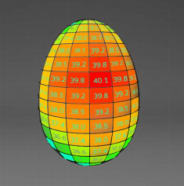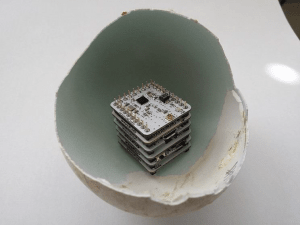Saving Vultures with Microduino and a Raspberry Pi
Follow articleHow do you feel about this article? Help us to provide better content for you.
Thank you! Your feedback has been received.
There was a problem submitting your feedback, please try again later.
What do you think of this article?
How do you save a species of animals from possible extinction using Microduino and a Raspberry Pi? That is a challenge that the team at Microduino are hoping that they have answered with their new EggDuino project, aimed to save one of the most infamous birds of prey on the planet.
Image: Microduino
Vultures may be one of the least glamorous animals, however there is no denying their importance to our eco-system; acting as the rubbish collectors of the wild by eating dead animal carcasses. This not only reduces the number of rotting animals but also helps to stop the spread of disease (including rabies which vultures are immune to).
Sadly however the number of vultures across the globe is in severe decline, in particularly in South Asia where toxic drugs used to treat cattle have some species on the brink of extinction.
The problem is that little is known about the incubation cycle of vulture eggs because the animal only lays one egg every year or two. This means that the conditions required for artificial incubation are an unknown.
In order to protect these birds of prey, more must be known about their breeding behaviour. As a result the International Centre for Birds of Prey and Microduino have undertaken the EggDuino project to monitor nests and close this knowledge gap.
The conservationists wanted the egg to include a host of sensors that could measure both its internal temperature and the temperature gradient across its surface, as well as barometric pressure, humidity, carbon dioxide levels, light intensity, and the egg’s rotation and movement. The data would then be transmitted to a relay node and uploaded to the cloud.
Initially, the ICBP had considered building a system around standard Arduino microcontrollers. Due to the size of the board, along with the sensory and communication requirements the standard Arduino was deemed unsuitable. This was probably a good move as the mother vultures may have been slightly concerned to see the edges of an Arduino hanging out of their eggs.
As an alternative the ICBP turned to Microduino, a family of Arduino-compatible microcontrollers and modules that can be stacked on top of each other and that are just 25.4 millimeters wide by 27.9 mm long.
They built a system that is split into three sections; a data-collection terminal that would gather and store data and perform some initial processing (the electronic egg itself), a data-relay terminal that would receive and retransmit processed data wirelessly, and a data repository in the cloud that researchers could access.
To add further complexity the Microduino team were also faced with another challenge by the ICBP; to ensure that the egg was capable of working independently for 70 days, in order to avoid disturbing the nesting vultures.
Consequently, they shifted the data processing and storage responsibilities to the data-relay to reduce the power consumption of their “EggDuino”.
They built an enclosure from laser-cut wood that would fit within an artificial eggshell. They then placed a Microduino core, a Bluetooth Low Energy (BLE) module, and a multisensor 10DOF module, which incorporates a three-axis gyroscope, a three-axis accelerometer, a magnetic field strength sensor, and a barometer inside the enclosure.
In addition, there are fourteen DS18B20 temperature sensors that cover the entire inner-shell surface and one SHT21 humidity sensor. These all use I2C connections to communicate with the core. An 1,800-milliampere-hour lithium-ion battery provides power.
The team then placed the enclosure in the egg, which was fabricated with a selective laser sintering machine using PA2200 nylon. This material has qualities similar to those of vulture eggshells.
Image: Microduino
Next they built the data-relay terminal by combining a Wi-Fi-enabled Raspberry Pi and a stack consisting of a Microduino Core+ (which uses a more powerful processor than the one placed inside the egg), a Bluetooth module, a real-time clock (RTC) module, and a weather station module.
The Pi talks to the stack via a custom board that creates a serial interface between the Core+ and the Pi’s general-purpose input/output connector.
The terminal is placed a short distance away from the egg and serves multiple purposes. First, it receives all the data collected from the egg wirelessly via Bluetooth. Second, it monitors the conditions outside the egg with its own light, temperature, humidity, and barometric sensors. Third, the terminal saves all the data from both the egg and its own sensors and stores it in the Pi. When connected to the Internet, the data is uploaded to a cloud server.

Each egg has a unique ID. Using the information uploaded by the data-relay terminals, they are able to construct a 3-D model of each egg’s surface-temperature gradient as well as display other relevant data in real time.
The eggs will be deployed during April and May 2016 by the International Centre for Birds of Prey, which already has some vultures successfully sitting on their connected eggs in early tests. A successful field test would mean that this method would not only to benefit vulture conservation but could also be used for a variety of other environmental efforts.
For a full case study please visit here



